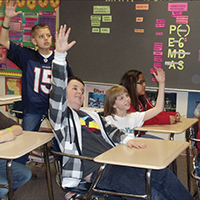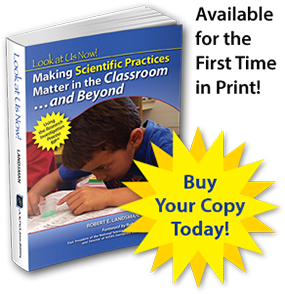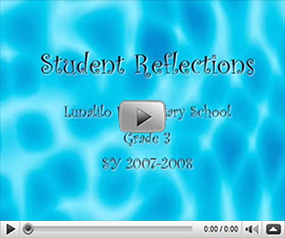How This Scientific practices Book Came To Be
 Almost five years ago, the 13 teachers whose 10 chapters appear in this book were invited to be participants in this project. They were selected based on their exemplary practice of scientific inquiry in the classroom that models what can happen when teachers make the adjustments necessary for the National Science Education Standards’ (NSES’) More Emphasis conditions to be met (National Research Council, 1996). These conditions describe a set of activities / actions that should be increased in contrast to a set of corresponding Less Emphasis conditions that should be minimized in order to successfully achieve science education standards.
Almost five years ago, the 13 teachers whose 10 chapters appear in this book were invited to be participants in this project. They were selected based on their exemplary practice of scientific inquiry in the classroom that models what can happen when teachers make the adjustments necessary for the National Science Education Standards’ (NSES’) More Emphasis conditions to be met (National Research Council, 1996). These conditions describe a set of activities / actions that should be increased in contrast to a set of corresponding Less Emphasis conditions that should be minimized in order to successfully achieve science education standards.
Initially, seven of these teachers were to contribute their descriptions and ideas as part of a single chapter in the NSTA Exemplary Science Series monograph on scientific inquiry (Yager, 2009). However, the contributions submitted by them were so abundantly rich with valuable examples of successful inquiry-based teaching and learning strategies, and outcomes, that it would have been remiss to withhold this information from the field. Therefore, ANOVA Science Education Corporation invited them to join in this endeavor to extend their brief descriptions into full chapters from which this book was then produced. This project also provided the opportunity to feature six additional teacher authors. Compiling this book was a long and arduous undertaking that placed the teacher authors into extremely challenging situations while they juggled the development, writing, and editing of their chapters with personal family life over a multitude of non-school hours, which included holidays and summertime.
The teachers featured have truly achieved making inquiry a key component of their instructional approach by 1) adhering to the NSES mandate that teachers “focus and support inquiries,” “plan an ‘inquiry-based’ science program,” and “encourage and model the skills of scientific inquiry”; and 2) aligning their teaching with the “scientific practices” envisioned in A New Framework for K-12 Science Education and emphasized throughout the Next Generation Science Standards (National Research Council, 2012; Achieve, Inc., 2013).
In 2006, Look at Me Now! Motivate Young Minds to Think & Learn Through Scientific Inquiry was published. It invited teachers and their students into the world of scientific inquiry through the use of the Research Investigation Process (RIP®) model so they could “share in the excitement and wonder of learning about the natural world” (Landsman, 2006). The teacher authors contributing to the current book have illustrated that adoption of scientific practices through this model as a part of their pedagogy led them to enjoy and share with their students the excitement and wonder of learning about the world. They respond to “Look at Me Now!” with a resounding “Look at Us Now!”
Your Shopping Cart
Ordering five (5) or more copies? Contact us for a special volume discount.
Read the Foreword
Enter your name and e-mail address below for immediate access to read the complete Foreword, written by Dr. Robert E. Yager, in its entirety.


 ANOVA Science
ANOVA Science